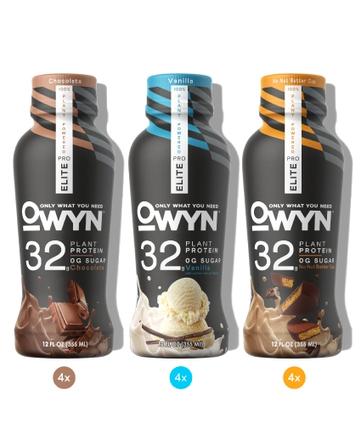Save 10% OFF All Subscription Orders.
Save 10% OFF All Subscription Orders.

This May, we aim to bring awareness to food allergies and those whose lives are affected. OWYN Medical Advisory Board Member, Dr. Ruchi Gupta, world-renowned for her groundbreaking research in the areas of food allergy and asthma, shares more on the food allergy epidemic in America.
1. Numbers
An estimated 33 million Americans have food allergies. That’s 1 in 13 children (about two in every classroom) and 1 in 10 adults. The most common allergies impacting Americans are peanuts, tree nuts, shellfish, milk, fish, wheat, egg, soy, and sesame.
2. Symptoms
Food allergies can affect multiple organ systems including the skin (hives, swelling, rash), the gut (abdominal pain, vomiting, diarrhea), the respiratory system (throat tightness, cough, trouble breathing), and the cardiovascular system (drop in blood pressure, fainting). Reactions can range from mild to severe and potentially life-threatening.
3. Regulations in food & beverage industry
To avoid adverse reactions, food allergic consumers rely on food and beverage manufacturers to reliably declare the presence of food allergens in their products. The Food Allergen Labeling and Consumer Protection Act of 2004 (FALCPA) is a US law that requires food ingredient labels to clearly identify the top nine food allergens; these are milk, egg, fish, crustacean shellfish, tree nuts, peanuts, wheat, sesame, and soy and are associated with about 90% of food allergy reactions. The Food Allergy Safety, Treatment, Education, and Research Act of 2021 (FASTER Act of 2021) added sesame as a ninth top allergen to be labeled as well due to its increased prevalence and severity of reactions.
However, precautionary allergen labeling (PAL) such as “may contain allergen” are not currently required on labels by manufacturers, often resulting in confusion from consumers about the meaning and safety of certain labels.
Even trace amounts of an allergen can cause a severe reaction. Testing products for cross-contact with the top nine allergens is a quality assurance measure that can minimize the risk for food allergic consumers. Best practices for allergen management protocols also include using rigorous cleaning processes, quality assurance personnel testing on the final products for allergens, suppliers sharing allergen information, and implementing measures to avoid cross-contact in facilities. Finally, it’s important to be transparent with consumers and provide regular updates so they can make informed decisions about their purchases for their safety.
At OWYN, our mission motivates us to deliver delicious and nutritious products that are free from the top common allergens, while simultaneously challenging the industry to adopt our standards of strict third party testing. We are inspired to make a difference in the lives of those impacted by food allergies.

Chocolate Dipped Strawberry Protein Shake
Craving something that tastes like dessert but still delivers on nutrition? The Chocolate Dipped Strawberry Protein Shake is rich, refreshing, and perfect as a post-workout boost, afternoon pick-me-up, or anytime you want a chocolatey, feel-good treat.




